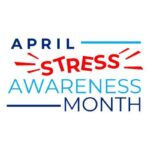Nicotine – Tobacco
Brief Description
 Tobacco use is the leading preventable cause of disease, disability, and death in the United States. According to the Centers for Disease Control and Prevention (CDC), cigarette smoking results in more than 443,000 premature deaths in the United States each year—about 1 in every 5 U.S. deaths, and an additional 8.6 million people suffer with a serious illness caused by smoking. Thus, for every one person who dies from smoking, 20 more suffer from at least one serious tobacco-related illness.
Tobacco use is the leading preventable cause of disease, disability, and death in the United States. According to the Centers for Disease Control and Prevention (CDC), cigarette smoking results in more than 443,000 premature deaths in the United States each year—about 1 in every 5 U.S. deaths, and an additional 8.6 million people suffer with a serious illness caused by smoking. Thus, for every one person who dies from smoking, 20 more suffer from at least one serious tobacco-related illness.
The harmful effects of smoking extend far beyond the smoker. Exposure to secondhand smoke can cause serious diseases and death. Each year, an estimated 126 million Americans are regularly exposed to secondhand smoke and almost 50 thousand nonsmokers die from diseases caused by secondhand smoke exposure.
Research has shown how nicotine acts on the brain to produce a number of effects. Of primary importance to its addictive nature are findings that nicotine activates reward pathways—the brain circuitry that regulates feelings of pleasure. A key brain chemical involved in mediating the desire to consume drugs is the neurotransmitter dopamine, and research has shown that nicotine increases levels of dopamine in the reward circuits. This reaction is similar to that seen with other drugs of abuse and is thought to underlie the pleasurable sensations experienced by many smokers. For many tobacco users, long-term brain changes induced by continued nicotine exposure result in addiction.
Nicotine’s pharmacokinetic properties also enhance its abuse potential. Cigarette smoking produces a rapid distribution of nicotine to the brain, with drug levels peaking within 10 seconds of inhalation. However, the acute effects of nicotine dissipate quickly, as do the associated feelings of reward, which causes the smoker to continue dosing to maintain the drug’s pleasurable effects and prevent withdrawal.
Nicotine withdrawal symptoms include irritability, craving, depression, anxiety, cognitive and attention deficits, sleep disturbances, and increased appetite. These symptoms may begin within a few hours after the last cigarette, quickly driving people back to tobacco use. Symptoms peak within the first few days of smoking cessation and usually subside within a few weeks. For some people, however, symptoms may persist for months.
Although withdrawal is related to the pharmacological effects of nicotine, many behavioral factors can also affect the severity of withdrawal symptoms. For some people, the feel, smell, and sight of a cigarette and the ritual of obtaining, handling, lighting, and smoking the cigarette are all associated with the pleasurable effects of smoking and can make withdrawal or craving worse. Nicotine replacement therapies such as gum, patches, and inhalers may help alleviate the pharmacological aspects of withdrawal; however, cravings often persist. Behavioral therapies can help smokers identify environmental triggers of craving so they can employ strategies to prevent or circumvent these symptoms and urges.
Upon entering the bloodstream, nicotine immediately stimulates the adrenal glands to release the hormone epinephrine (adrenaline). Epinephrine stimulates the central nervous system and increases blood pressure, respiration, and heart rate.
Like cocaine, heroin, and marijuana, nicotine increases levels of the neurotransmitter dopamine, which affects the brain pathways that control reward and pleasure. For many tobacco users, long-term brain changes induced by continued nicotine exposure result in addiction—a condition of compulsive drug seeking and use, even in the face of negative consequences. Studies suggest that additional compounds in tobacco smoke, such as acetaldehyde, may enhance nicotine’s effects on the brain.
When an addicted user tries to quit, he or she experiences withdrawal symptoms including irritability, attention difficulties, sleep disturbances, increased appetite, and powerful cravings for tobacco. Treatments can help smokers manage these symptoms and improve the likelihood of successfully quitting.

Fatal Effects
 Cigarette smoking kills an estimated 440,000 U.S. citizens each year—more than alcohol, illegal drug use, homicide, suicide, car accidents, and AIDS combined. Between 1964 and 2004, more than 12 million Americans died prematurely from smoking, and another 25 million U.S. smokers alive today will most likely die of a smoking-related illness.
Cigarette smoking kills an estimated 440,000 U.S. citizens each year—more than alcohol, illegal drug use, homicide, suicide, car accidents, and AIDS combined. Between 1964 and 2004, more than 12 million Americans died prematurely from smoking, and another 25 million U.S. smokers alive today will most likely die of a smoking-related illness.
Health Concerns
Cigarette smoking accounts for about one-third of all cancers, including 90 percent of lung cancer cases. Smokeless tobacco (such as chewing tobacco and snuff) also increases the risk of cancer, especially oral cancers. In addition to cancer, smoking causes lung diseases such as chronic bronchitis and emphysema, and increases the risk of heart disease, including stroke, heart attack, vascular disease, and aneurysm. Smoking has also been linked to leukemia, cataracts, and pneumonia. On average, adults who smoke die 14 years earlier than nonsmokers.
Although nicotine is addictive and can be toxic if ingested in high doses, it does not cause cancer—other chemicals are responsible for most of the severe health consequences of tobacco use. Tobacco smoke is a complex mixture of chemicals such as carbon monoxide, tar, formaldehyde, cyanide, and ammonia—many of which are known carcinogens. Carbon monoxide increases the chance of cardiovascular diseases. Tar exposes the user to an increased risk of lung cancer, emphysema, and bronchial disorders.
Pregnant women who smoke cigarettes run an increased risk of miscarriage, stillborn or premature infants, or infants with low birthweight. Maternal smoking may also be associated with learning and behavioral problems in children. Smoking more than one pack of cigarettes per day during pregnancy nearly doubles the risk that the affected child will become addicted to tobacco if that child starts smoking.
While we often think of medical consequences that result from direct use of tobacco products, passive or secondary smoke also increases the risk for many diseases. Secondhand smoke, also known as environmental tobacco smoke, consists of exhaled smoke and smoke given off by the burning end of tobacco products. Nonsmokers exposed to secondhand smoke at home or work increase their risk of developing heart disease by 25 to 30 percent 7 and lung cancer by 20 to 30 percent. In addition, secondhand smoke causes respiratory problems, such as coughing, overproduction of phlegm, and reduced lung function and respiratory infections, including pneumonia and bronchitis, in both adults and children. In fact, each year about 150,000 – 300,000 children younger than 18 months old experience respiratory tract infections caused by secondhand smoke. Children exposed to secondhand smoking are at an increased risk for sudden infant death syndrome, ear problems, and severe asthma. Furthermore, children who grow up with parents who smoke are more likely to become smokers, thus placing themselves (and their future families) at risk for the same health problems as their parents when they become adults.
Although quitting can be difficult, the health benefits of smoking cessation are immediate and substantial—including reduced risk for cancers, heart disease, and stroke. A 35-year-old man who quits smoking will, on average, increase his life expectancy by 5 years.
Source: NIDA (National Institute on Drug Abuse)










